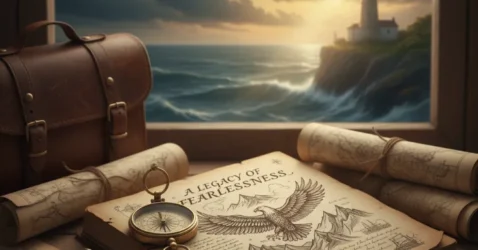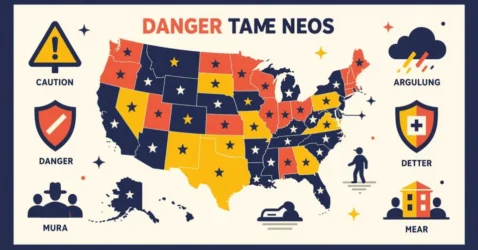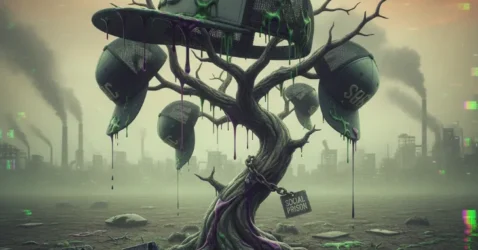The Earth’s Palette: 12 of the Most Colorfully Stunning Natural Wonders
Tired of the mundane? Does the thought of endless green lawns, average oak trees, and colorless, odorless water make you want to yawn? You’re not alone. The world, at times, can feel a little bit… beige.
But that’s only if you aren’t looking in the right places. Beyond the typical scenery lies a hidden gallery of natural masterpieces, vibrant places that defy expectations and remind us just how spectacular our planet is. Forget boring—it’s time to take a virtual tour of 12 of the most intensely colorful natural wonders on Earth. These places turn the world’s most common elements—water, rock, and vegetation—into works of art.
Rivers of Fire and Rainbows
Some of the most shocking colors in nature are found in the waterways, tinted by everything from minerals to unique aquatic life.
1. Rio Tinto, Spain
Imagine a river that flows like liquid copper. The Rio Tinto, rising in the Sierra Morena Mountains of southwestern Spain, earns its stunning orange and red hues from an abundance of heavy metals, including copper and iron. Spanning a length of 60 miles (100 kilometers), this river is a must-see, particularly around the small mining town of Nerva. Be warned, though: the incredible coloration only lasts for about half its length before it reverts back to a more “boring” non-toxic appearance near Nieba.
2. Caño Cristales, Colombia
Nicknamed the Liquid Rainbow (or the slightly less dramatic River of Five Colors), Caño Cristales in Colombia’s Serrania de la Macarena is a true anomaly. It flows with vibrant streaks of yellow, green, blue, black, and most predominantly, red. While algae is the common culprit for odd colors, here the spectacular scarlet shade is caused by a unique plant called Macarenia clavigera.
Lakes in Every Shade of the Spectrum
Not all lakes are blue. Some are turquoise, some are pink, and some are fiery red.
3. Lake Louise, Alberta, Canada
Located in Banff National Park, Lake Louise is a magnificent example of glacial beauty. Known by First Nation peoples as Ho-run-num-nay (Lake of the Little Fishes), its astonishing turquoise color comes from finely grained rock particles—called rock flour—that are suspended in the water as the glacial ice melts.
4. Laguna Colorada, Bolivia
Translated literally as “Red Lagoon,” this shallow salt lake in the Eduardo Avaroa Andean Fauna National Reserve near the Chilean border lives up to its name. Its dramatic reddish-pink color is caused by a specific type of algae that thrives in its salty conditions. It’s a spectacular sight, often contrasted by the white of the salt crust and the nearby Andean peaks.
5. Lake Hillier, Australia
Located on Middle Island in Western Australia, Lake Hillier is famous for its distinct, bright pink hue. No, it’s not Pepto Bismol runoff! Like many unusual water colors, this saline lake gets its coloration from an algae called Dunaliella salina.
6. Five Flower Lake, Sichuan, China
Tucked away in the Jiuzhaigou Valley, the Five Flower Lake is a shallow body of water renowned for its clear visibility and unique multicolored bottom. The water is so transparent that you can see the crisscrossing trunks of trees that fell many moons ago, providing a natural, underwater mosaic of greens, blues, and yellows.
Lands That Look Alien
The colors of the earth itself—rock, mineral deposits, and extreme environments—can create scenes that look truly extraterrestrial.
7. Landmannalaugar, Iceland
In 1477, a volcanic eruption in the Highlands of Iceland created one of the country’s most colorful landscapes. Landmannalaugar features a stunning array of rhyolite mountains that display vibrant colors like yellow, pink, red, green, and blue. While some parts are difficult to access by car, it’s a paradise for hikers, or perhaps a good excuse to befriend a horse!
8. Danakil Depression, Ethiopia
Looking for one of the least hospitable places on Earth? The Danakil Depression holds the record for the highest average year-round temperatures. Its hot springs are a bizarre spectacle, featuring bubbling sulfur and mineral deposits that create a chaotic, otherworldly landscape of acidic yellows and greens. This harsh environment is so hot, acidic, and salty that even the most resilient microorganisms struggle to survive.
9. Fly Geyser, Washoe County, Nevada
A truly unique man-made accident turned into a natural wonder, the Fly Geyser continuously spews hot water in Washoe County, Nevada. The rock structure it has created is stained with incredible hues of red and green thanks to thermophilic algae that flourish in the wet, hot environment. This geyser is located on private land owned by the Burning Man Project.
Vast Tapestries of Cultivated Color
Sometimes, it takes human intervention to create vast, colorful spectacles.
10. The Lavender Fields of Provence, France
In the summers, the geographical region of Provence in southeastern France transforms into a sea of lush lavender purple. To witness this intoxicating sight, head to the Luberon and Verdon plateau regions. However, the viewing window is brief; the fields begin to blossom in early June and are typically harvested by mid-July.
11. Honghe Hani Rice Terraces, Yunnan, China
With a history stretching back over 1,200 years, the Honghe Hani Rice Terraces in Yunnan, China, are a magnificent example of agricultural art. Covering over a million acres, these mountainside terraces reflect the sky, creating a breathtaking, massive patchwork of shimmering blues, greens, and browns—a UNESCO World Heritage Site since 2013.
12. Palouse, Northwestern U.S.
The Palouse is a distinct agricultural region spanning parts of Idaho, Washington, and Oregon. It consists of vast, rolling loess hills that cover an area of 19,000 sq mi (). Depending on the season and the crops, these hills can display a wide range of colors, from the deep green of emerging wheat to the rich gold of harvest, making the entire region look like a giant, ever-changing prairie canvas.
From algae-dyed lakes to mineral-rich rivers and human-cultivated fields, these 12 destinations prove that when it comes to color, Mother Nature is the ultimate artist. Which one would you want to see first?






















